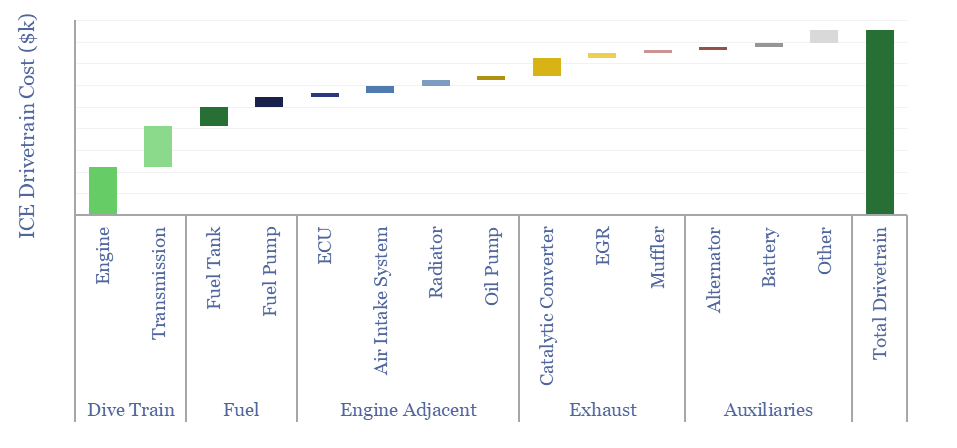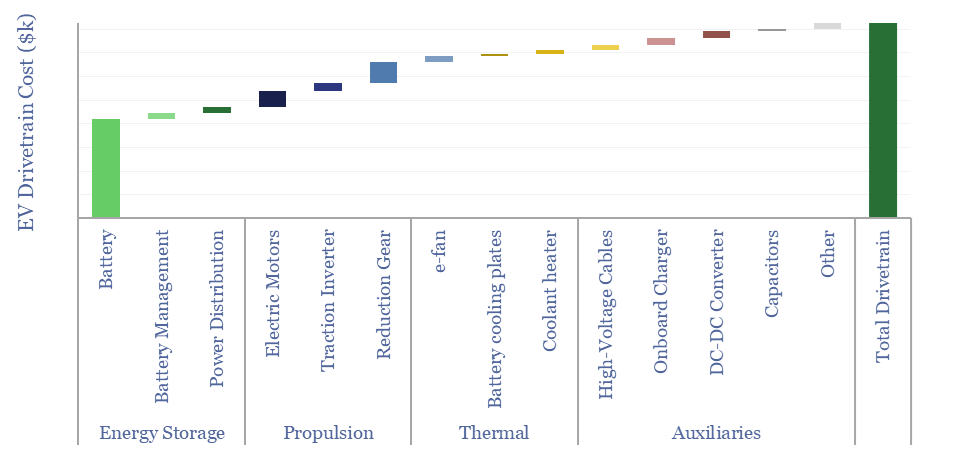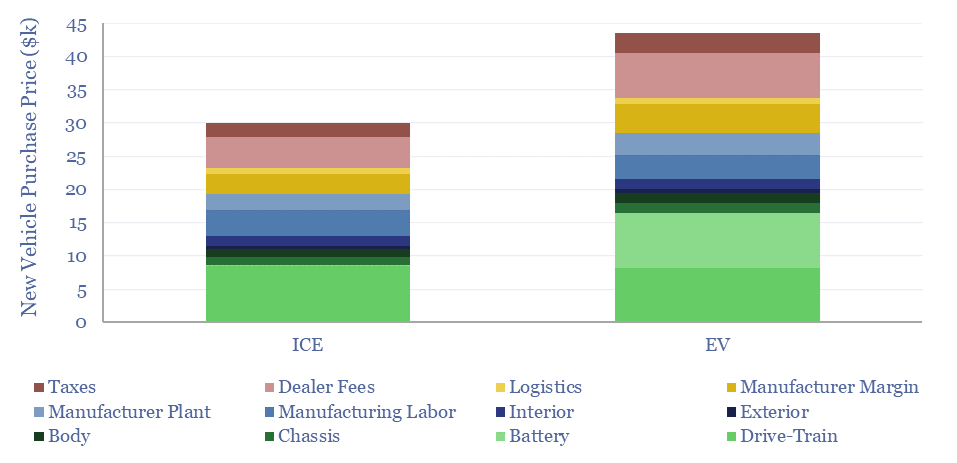This data-file disaggregates the $30k total cost of a typical new ICE and the c$45k total cost of a typical new EV, as a sum-of-the-parts, across 25 cost lines. Drive train costs are similar at $8-9k each. The key challenge for the EV is the battery. The electric vehicle cost breakdown shows promise for improving power electronics and smaller batteries.
When we tabulate the sales prices of vehicles in 2024, the average new ICE vehicle on the market is being sold for $30k and the average new EV is being sold for closer to $45k. So, can we disaggregate the costs of both vehicle types into their component parts?
To answer this question, we have attempted a full breakdown of electric vehicle costs and a full breakdown of ICE costs, looking across 25 cost lines.
We estimate that the core drive train of an ICE costs c$9k, after tabulating the engine, transmission, fuel tank, fuel pump, engine control unit (ECU), air intake system, radiator, oil pump, catalytic converter, exhaust gas recirculation (EGR), muffler, alternator, starter battery and other auxiliaries (chart below, numbers in the data-file).

Conversely, we estimate that the core drive train of an EV costs c$16k, after tabulating the lithium ion battery, battery management system (BMS), power distribution system, electric motors, traction inverter, reduction gear, e-fan, battery cooling plates, coolant heater, high-voltage cables, onboard charger (OBC), DC-DC converter and capacitors (chart below, numbers in the data-file).

On top of this, our vehicle cost breakdown also adds similar costs for the chassis, body, exterior, interior, auto manufacturing, and logistics. Other fees such as the manufacturer’s margin, distributors’ margin, and sales taxes tend to be charged as a percentage rate. Hence a more expensive underlying vehicle results in larger mark-ups.
Effectively, the drive trains of an ICE and an EV are relatively similar today, while the key difference is the cost of the battery. Numbers can be stress tested, and taken back to first principles, in the EVs and ICEs tabs.
